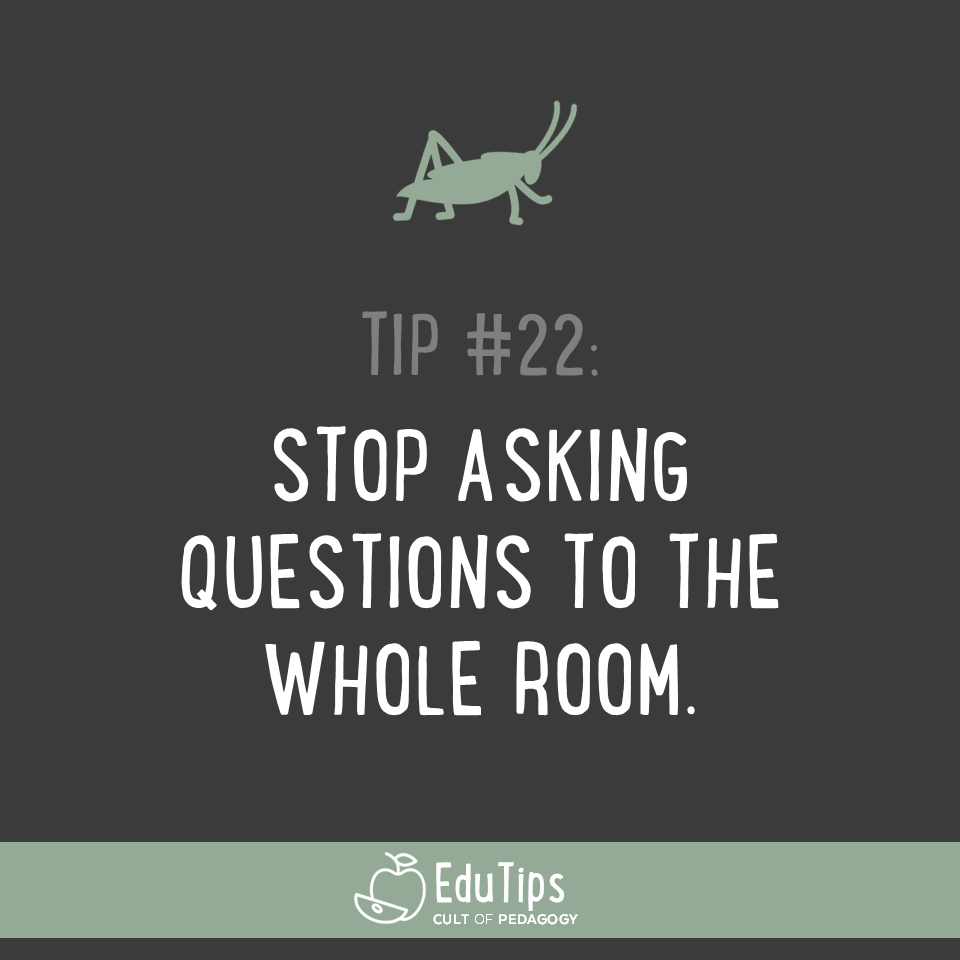Sponsored by The Modern Classrooms Project.

Watch a video version of this EduTip on Instagram.
When we have a group gathered together, like a class of students, an audience sitting in an auditorium, or even something small like a book club, a department meeting, or a Zoom call, the person running the show will sometimes start by asking the group a question like, “How’s everyone doing?”
And what do they often get? Silence. Nothing. Maybe one or two extroverts will offer a word to break the awkward silence. But it pretty much never generates any kind of quality response.
Because what’s supposed to happen? Am I, as a student in this class, going to (A) take the floor and respond just for myself? Like, “Thanks for asking, I’m doing ok.” Because that would feel like I’m sort of assuming that I should be the center of attention, right? And then (B) there’s the question of honesty. The most common response to “How ya doin’?” is something along the lines of great, fine, and so on, regardless of whether it’s actually true. The true answer is usually a lot more complicated. If a good friend asked me the same question, I might spend a few minutes going into detail about how things are actually going, but I wouldn’t do it in response to a teacher, in front of a whole group of my peers.
To be fair, I think most of the time the person asking the question means for it to be rhetorical. They are not really expecting an answer. But I have seen more than once where a teacher or presenter will respond to the silence with something along the lines of, “Okay, you guys are pretty quiet today.” As if the participants are deliberately holding back. The same thing happens when we ask, “Any questions?” and get nothing, but then discover later that people actually did have questions; they just didn’t ask.
What’s most likely happening in cases like this is that there are plenty of people in the room who have something to say; they just haven’t been asked the right question.
In 2019 I wrote a post called When You Get Nothing But Crickets, and it goes into more detail about this problem. For now, I’ll give you three small shifts you can make that will give you much better results than asking the whole room a question:
- Ask one person. Instead of asking everyone what they think about a topic, like “What did you guys think about yesterday’s speaker?”, try asking one person directly. Then they’ll know you’re talking to them and will be more likely to answer.
- Ask a direct question. Although they’re well-intended, questions like “How are you?” or “How was your weekend?” are often interpreted as general niceties to which you’re supposed to just answer with vaguely positive responses. If you switch to a question that has a more clear answer, like “What did you do this weekend?” you’ll probably get a more interesting response, something that might lead to more of a conversation.
- Ask FOR questions instead of asking IF there are any questions. I’ve given this advice in lots of other places, but it works so well it’s worth repeating. Instead of saying, “Any questions?” ask “What questions do you have?” This shift sends an important message that questions are welcome, natural, and expected, not an inconvenience. When teachers make this change, they often find that student hands go up with a lot more frequency.
See all EduTips here.

Thank you for this. I am going to start this shift next week in class!